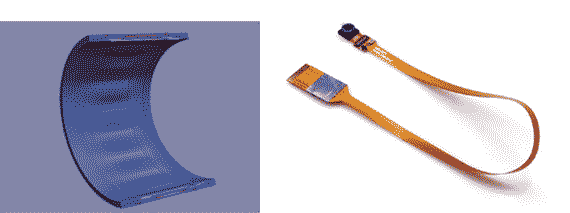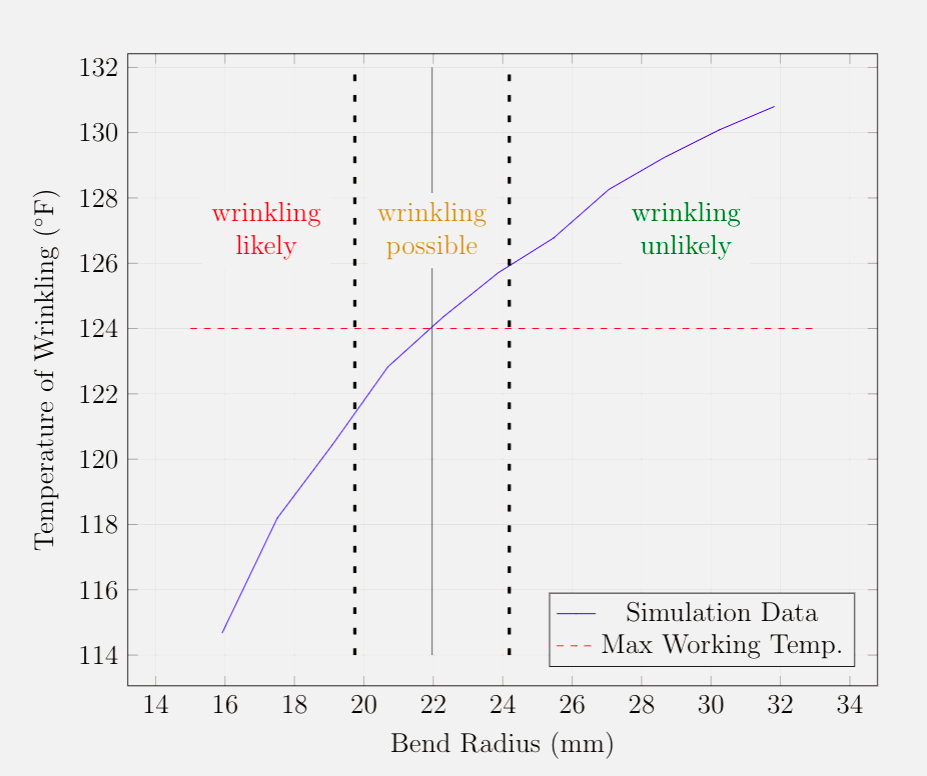Case studies
Spline-based simulation makes flat flex cable simulation possible

Complex electrical assemblies often use thin, flat flex cables (FFC) to transmit power or electrical signals between printed circuit boards (PCB). When these PCBs are stacked, the FFCs often have smooth 180 degree bends. Understanding the mechanical and thermal response of these cables is highly important in applications where these cables perform vital functions.
Challenges.
A major concern when connecting stacked circuit boards with bent flex cables is that depending on how tightly the cable is bent, the bending can cause the cable to buckle when thermal loads are applied. An increase in temperature causes adhesive layers to become softer resulting in a physical phenomenon of wrinkling. This wrinkling can cause the cable material to fracture into layers (called delamination) and cause electrical failure.
Predicting the minimum radius that a cable can be bent at a specified temperature is critical. To predict the delamination of flex cable materials, one Coreform customer created several flex cable models. They used standard FEA tools to bend a small cable section and heat the bend using a thermal load. Simulating the wrinkling phenomenon on one cable model required an extremely large mesh size and millions of timesteps. Wrinkling eventually occurred after 36 hours of running on their 2,000 core HPC for a total computation cost of 72,000 hours. Because of the extremely high cost of the study, our customer was unable to complete the standard FEA refinement studies.
Solution.
Using Coreform's simulation tools, our customer created a 3D mesh from the cable models, then converted the mesh into Coreform's proprietary U-splines. The U-spline representation had approximately 1,000 times fewer elements than the traditional FEA mesh and more closely represented the original CAD geometry. The U-spline simulation ran on only five cores in 12 hours for total cost of 60 hours.

Benefits.
- U-Spline technology now allows our customer to use simulation to design their manufacturing processes to avoid cable failure.
- For the flex cable models used, the U-spline simulation required approximately 1,000 times fewer elements and was 1,000 times faster, allowing our customer to make accurate predictions at a scale previously impossible using traditional FEA.
- Given a fixed flex cable design and known working temperature, our customer can now ensure that cables are not bent tighter than the minimum allowable threshold found in analysis.
These advantages over traditional FEA now enables our customer to apply this same workflow to hundreds of unique flex cable designs at a huge cost-savings.

Guide for the assembly of this flex cable design. Cables with a bend radius that exhibit buckling at a temperature lower than the maximum working temperature (in this case < 22mm) are prone to electrical failure.
Start a conversation
Have questions about Coreform or its products? We'd love to hear from you.


